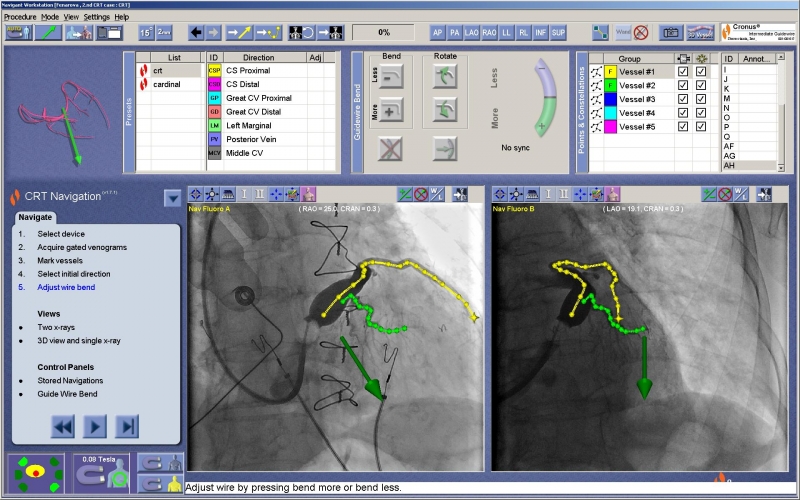MAGNETICALLY GUIDED LEFT VENTRICULAR LEAD IMPLANTATION IN CRT PATIENTS
Introduction: Left ventricular (LV) lead placement is a critical part for long-term successful cardiac resynchronization therapy (CRT). However, LV lead positioning and placement is often complicated by difficult coronary venous anatomy and substrate-based electrophysiological properties. Objective:1. magnetic navigation (MN) of a guide-wire ( Stereotaxis, St. Louis, MO, USA) could help overcome difficult coronary venous anatomy thereby increasing LV implant success and reducing implant time.2. evaluate the efficacy of remotely navigating a magnetic guide-wire within the CS based on his reconstruction.
Methods: Patiens indicated for CRT ( N = 27) were randomized to a conventional LV EL implant versus MN. Prior to randomization all pts get the CT-scan of CS and a coronary venogram was obtained. Best LV lead site and position was defined based on anatomical situation. CRT system was implanted according to LV implant metod determined by randomization. The primary outcomes were LV lead implant time and implant success rate to reach the operator defined site.
Results: Table 1:
| Impl.success(%) | Implant time(min) | LV lead time(min) | Fluoro time(min) | Guidewires (n) | |
| MN (n=14) | 92.1 | 92±21 | 11±7 | 17±14 | 1.7±1.1 |
| Control (n=13) | 76,8 | 86±34 | 9±6 | 14±7 | 2.1±2.0 |
Conclusions: In a pilot study magnetic navigation system did not facilitate LV lead implant time but improve success rate of LV lead implant. After learning courve MN could be an advantage for routine LV lead implant and perioperative hemodynamical measurements to optimize the long-term outcome of CRT. Reconstruction of CS based of image integtation allows precise magnetic navigation of a guide-wire within the CS using selected vectors. MN may have benefit for very difficult anatomy of cardiac veins but this requires certainly further studies.


